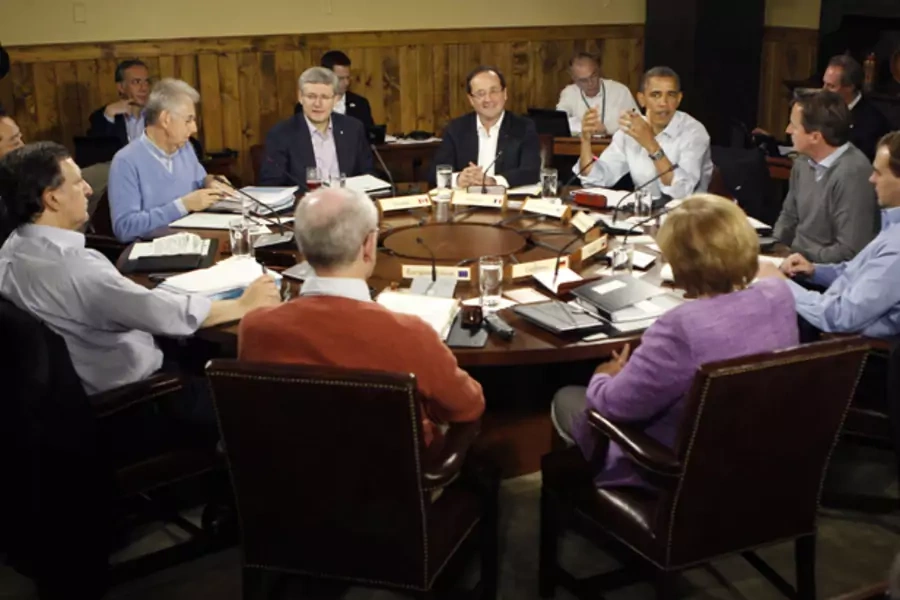A Contrarian’s Take on the Global Financial Crisis: The System Worked

More on:
If there’s one lesson observers have drawn from the “greatest economic crisis since the Great Depression,” it’s that our outdated system of global economic governance failed to respond and needs a major overhaul. A closer look at the performance of international institutions since 2008, however, paints a rosier picture. Contrary to conventional wisdom, Tufts professor Dan Drezner argues in a provocative new CFR working paper that “the system worked.” Despite dire predictions, major economic powers cooperated within multilateral institutions, both old and new, to prevent a global financial collapse, forestall a descent into tit-for-tat protectionism, adopt new rules of financial regulation, and adjust the governance structures of global bodies to reflect power shifts.
Drezner’s benchmark for comparison is the international response to the Great Depression. This is apt, since global stock capitalization as well as housing prices actually plummeted more as a percentage of precrisis levels during the first ten months of the Great Recession. In contrast to the early 1930s, the global response this time around was robust. This global economy has recovered, if unevenly. Industrial output, global growth, international trade, and foreign direct investment (FDI) have all rebounded much more smartly than they did in the several years after 1929. With the exception of FDI, all now exceed their precrisis peak.
At the onset of the global credit crisis, numerous experts (including this one) predicted a descent into tit-for-tat protectionism and beggar-thy-neighbor trade and monetary policies. In fact, nothing of the sort occurred, thanks to self-restraint and concerted action on the part of the world’s leading economic powers. As Drezner notes, “the combined effect of protectionist actions for the first year of the peak of the financial crisis affected less than 0.8 percent of global trade.” Considering that the Doha “development round” of WTO trade negotiations was in the doldrums at the time, this is a monumental achievement. Perhaps more surprisingly, the commitment to an open global economy enjoys broad support not only among political elites but indeed publics in most trading nations.
Even more impressive was macroeconomic coordination among the finance ministries and central bank governors of the world’s leading economies. Much of this coordination occurred under the aegis of a new institution, the Group of 20 (G20), which met for the first time at the leaders level in Washington in November 2008. The G20 nations took dramatic action, injecting unprecedented liquidity into the world economy—including by providing unlimited currency swaps, bolstering the resources of the IMF and World Bank, and pursuing massive expansionary policies (particularly noteworthy in the cases of China and the United States).
In parallel with these steps, G20 members negotiated major new financial regulations designed to prevent similar crises in the future. These included more stringent capital requirements (Basel III), agreed within an expanded Basel Committee on Banking Supervision, as well as new macroprudential standards for systemically important cross-border financial institutions, hammered out within the new Financial Stability Board (FSB), an expanded and stronger successor to the feckless Financial Stability Forum. While analysts continue to debate the adequacy of these rules and the time frame for their full implementation, the speed with which they were agreed is impressive by historical standards.
Why the difference with the Great Depression? In a word, institutions. In contrast to the early 1930s, today’s nation-states inhabit a world that is chockablock with multilateral institutions and frameworks covering virtually every conceivable sphere of transnational activity. Institutions are particularly useful during times of crisis. Beyond narrowing the potential range of interstate conflict, providing outlets for the peaceful settlement of disputes and establishing norms of legitimate conduct, they serve as valuable repositories of technical expertise, sources of implementation capacity, and focal points for potential cooperation. For all their shortcomings, the major institutions of global economic governance—including the IMF, World Bank, WTO and finance ministers’ G20—proved resilient, flexible, and adaptable. The IMF—regarded by many as irrelevant before the crisis—got a new lease on life, as well as a major injection of capital. Ditto the Bank. Despite its Doha failure, the WTO maintained the integrity and openness of the global trading system, and its binding dispute resolution mechanism provided an anchor in a turbulent sea. Finally, the G20, elevated to the leaders level, rose to the occasion, providing direction to more formal institutions like the IMF and the Bank, including changes to quota shares and governing boards to reflect the shift of global economic power to the BRICs and other developing world.
If global institutions performed reasonably well, why do they continue to get a bad rap? One answer, Drezner speculates, lies in the unevenness of the global economic recovery, most notably in the United States, Japan and Europe. The relative stagnation of the mature economies—where most of the commentariat live, incidentally—makes it tempting for analysts to judge global institutions as a failure. But in so doing, they make a double mistake. Beyond overlooking the overall health of the recovering global economy—particularly compared to the dire predictions of 2008—they err in attributing current economic difficulties to the multilateral system, rather than to persistent political gridlock and economic mismanagement by their own national governments.
More on:
 Online Store
Online Store